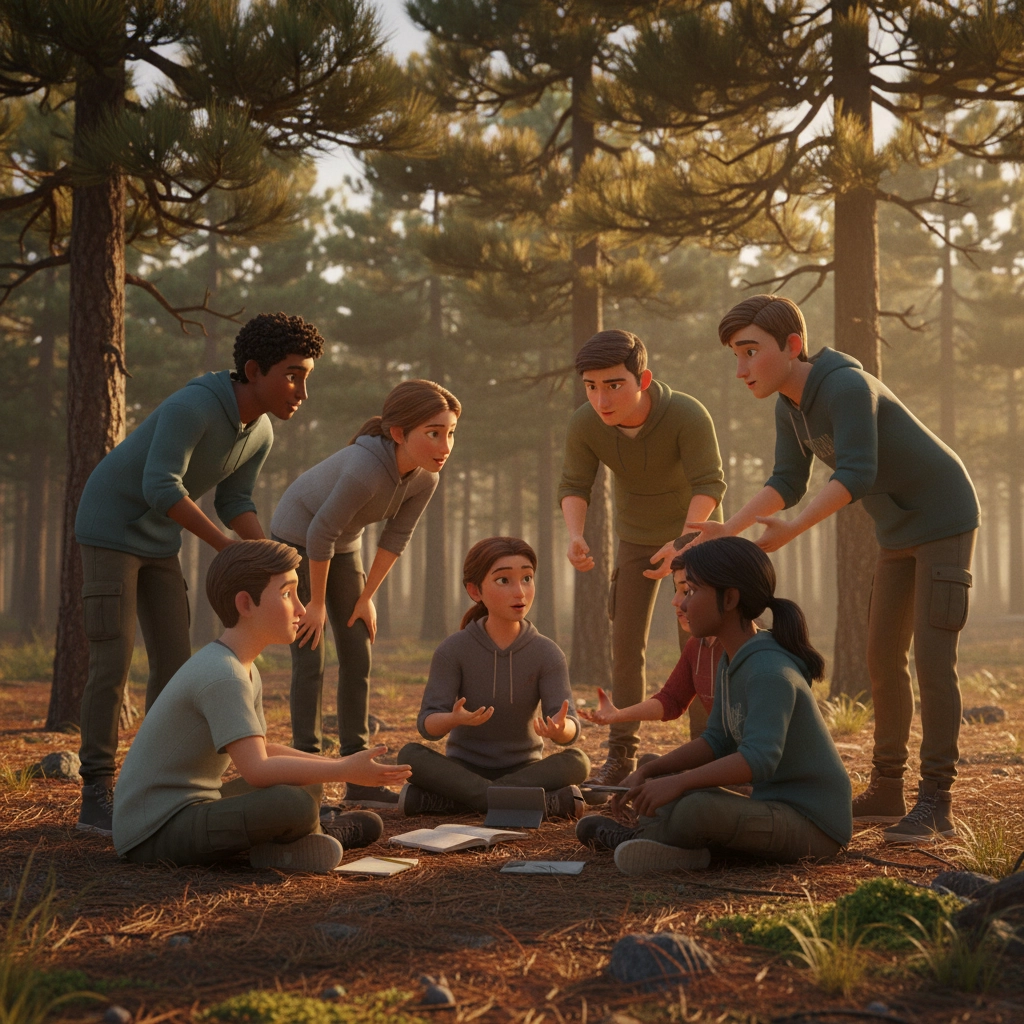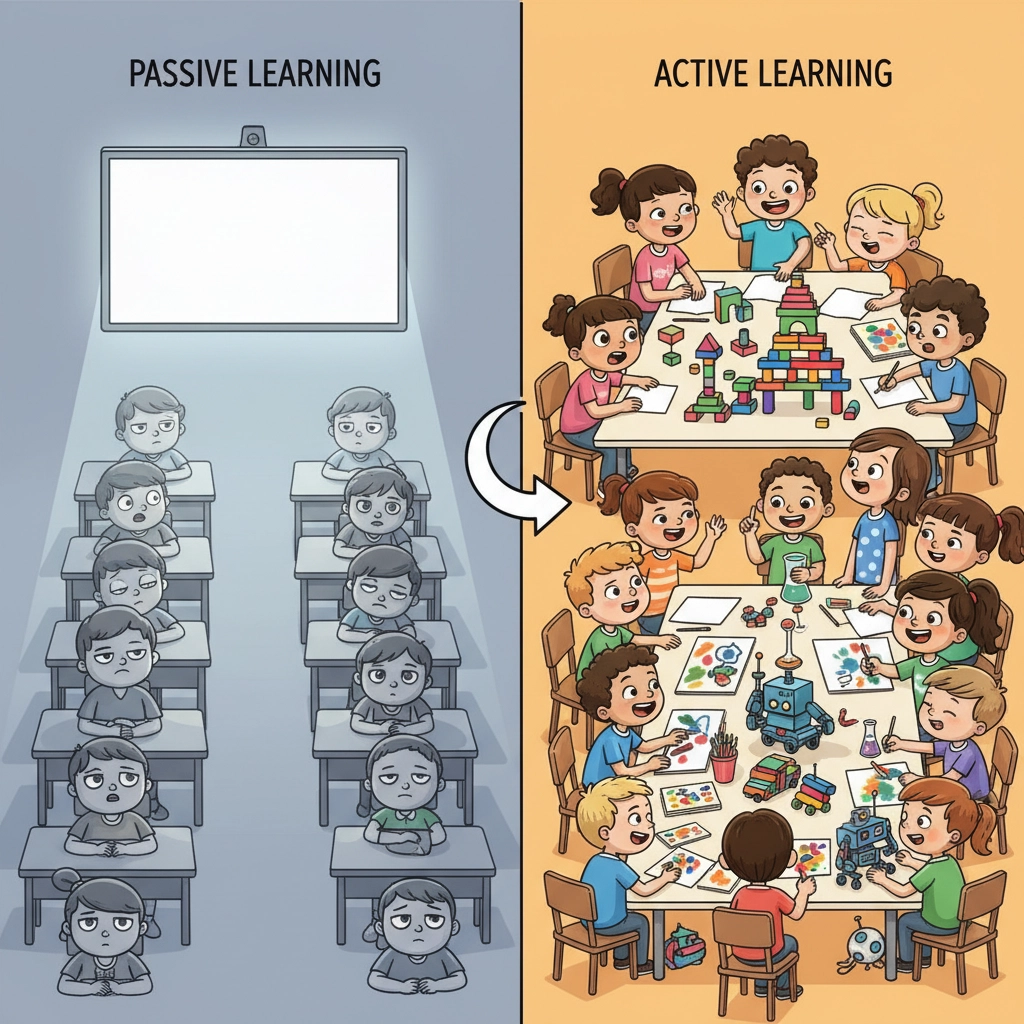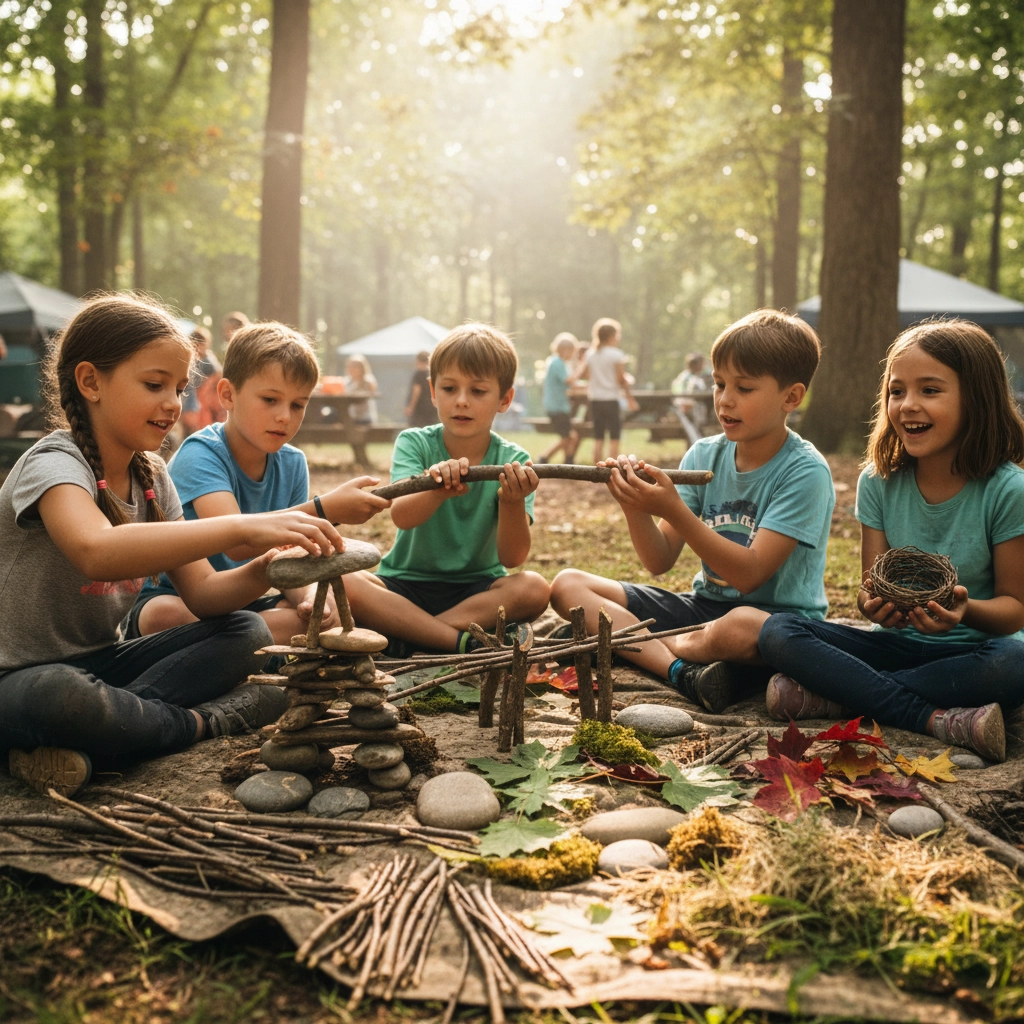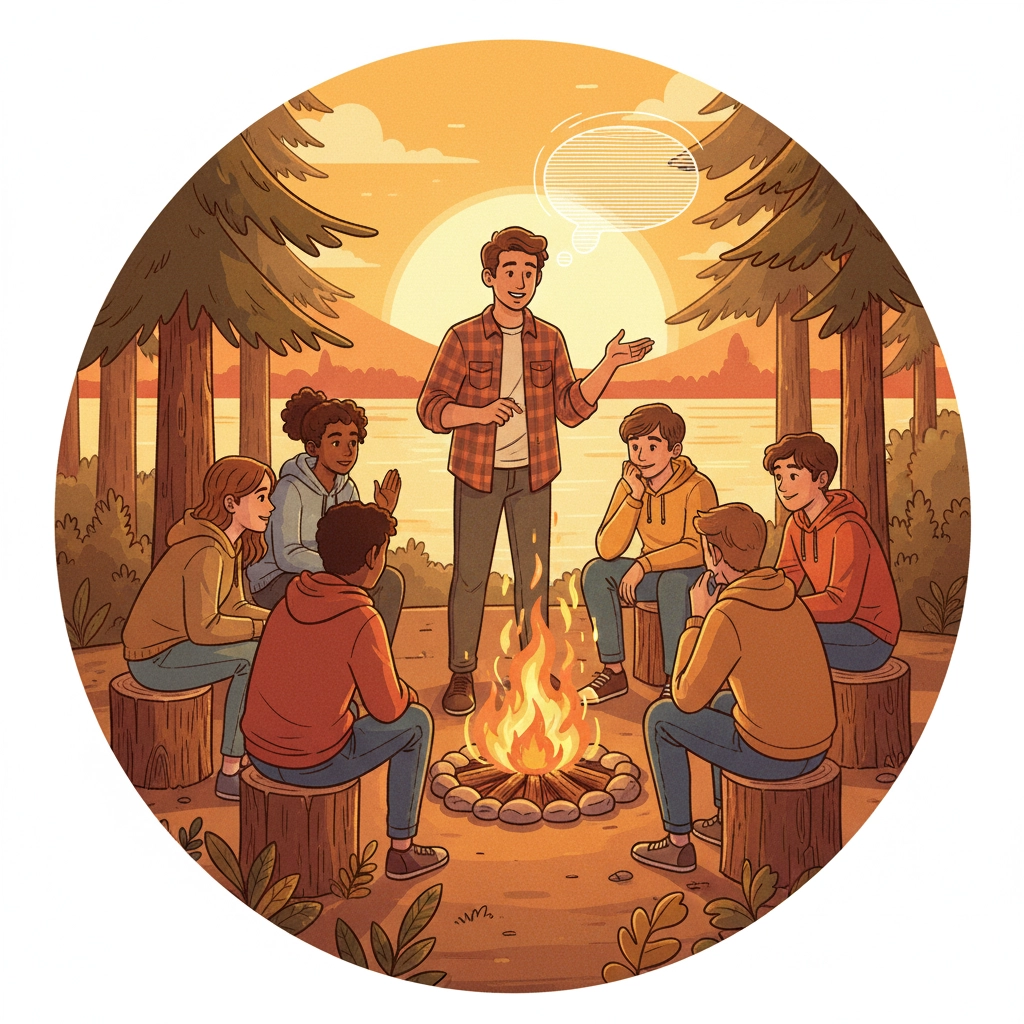The Summer Camp Daily Brief – October 23, 2025
- Matthew Kaufman

- Oct 23
- 6 min read
Story of the Day
Picture this: You're sitting in yet another staff training session where everyone's eyes are glazed over, staring at slides about safety protocols. Sound familiar? Well, there's fresh research that might just revolutionize how we think about teaching: both our staff and our campers.
A groundbreaking study just dropped that explores how artificial intelligence can transform learning management systems. But here's the twist: it's not about replacing human connection with robots. Instead, the research reveals that the most powerful learning happens when AI supports human collaboration and higher-order thinking, rather than just delivering content.

The paper argues that successful learning design must shift from automated content delivery to human-AI collaboration. For those of us in the camp world, this translates into something we've always known but maybe haven't fully embraced: how we teach matters just as much as what we teach.
Think about your last staff orientation. Were your counselors actively problem-solving, discussing real scenarios, and reflecting on their experiences? Or were they passively absorbing information from a PowerPoint presentation? The difference between these approaches could determine whether your staff truly grows: or just goes through the motions.
Why This Matters for the Camp World
Here's where this gets really interesting for camp professionals. We're not running traditional classrooms, and we shouldn't be training like them either.
Your staff: especially those Gen Z counselors who make up the backbone of seasonal programs: expect their training to feel relevant, skill-based, and connected to their personal growth. They've grown up with technology that adapts to them, asks questions, and responds to their input. Why should their professional development be any different?
But it goes deeper than staff satisfaction. When we design experiences that feel immersive, active, and meaningful, we're modeling the exact approach that works best with campers too. Kids don't learn by sitting still and listening: they learn by doing, questioning, trying, failing, and trying again.

The research signals something crucial: designing experiences where humans and technology partner to ask questions, reflect, and apply insights creates more impactful learning than simply using tech to deliver content. At camp, this means whether you're onboarding new staff, training program specialists, or building your specialty track curricula, leaning into "designing for thinking, doing, and collaboration" will pay dividends.
Consider this: when a counselor learns conflict resolution through role-playing actual camper scenarios with peers, then reflects on what worked and what didn't, they're building real skills. When they just watch a video about conflict resolution? They're building knowledge, but not necessarily capability.
The same principle applies to campers. A STEM activity where kids collaborate to solve a problem, test their solution, reflect on results, and iterate their approach? That's where the magic happens. That's where problem-solving skills actually develop.
3 Actionable Insights for This Week
1. Transform One Training Module Using Active Learning Design
Let's start small but strategic. Pick one training module you're planning to run this week: maybe safety protocols, activity leadership, or behavior management: and completely reimagine it.
Instead of presenting information, create a scenario. For example, rather than explaining emergency procedures, set up a mock situation where staff teams work through the protocol step-by-step. Have them identify potential challenges, discuss solutions with peers, then reflect on what they learned through the process.
Here's a quick framework you can use: Scenario → Action → Reflection → Application. Present the challenge, let them work through it, facilitate a discussion about what happened, then help them connect it to their actual camp responsibilities.
Consider incorporating simple tech tools: maybe they document their solutions with photos, record a quick video reflection, or use a tablet to research additional resources. The key is that technology supports their thinking and collaboration rather than replacing it.
2. Build "Design Thinking Moments" Into Camper Programming
If you run specialty tracks: whether that's outdoor adventure, arts and crafts, or technology programs: try integrating small collaborative design challenges where campers become co-creators of their experience.

Picture this in action: Your arts group isn't just following a predetermined craft project. Instead, they're presented with a challenge ("Create something that tells the story of our cabin") and materials, then they collaborate to design their approach. You facilitate, provide guidance when they get stuck, and help them reflect on their creative process.
This mirrors the human-AI collaborative model from the research: campers lead the creative process, you provide support and resources when needed, and built-in reflection helps them understand not just what they made, but how they made it and what they learned.
The beautiful thing about this approach? It naturally develops those essential problem-solving skills we know camps are uniquely positioned to foster. Time management kicks in when they realize they need to plan their project timeline. Creativity flourishes when they hit obstacles and need to pivot. Interpersonal skills develop as they negotiate ideas and delegate tasks.
3. Institute Micro-Reflections After Key Moments
This one's simple but powerful: build short reflection moments into your regular rhythm. After significant training sessions, program activities, or even challenging days, create space for quick peer check-ins.
For staff, try this: After your first week of programming, gather your counselors for a 10-minute reflection circle. Ask questions like: "What surprised you about working with your age group? What technique worked better than expected? What would you do differently next session?"
For campers, especially older ones, you might end activity blocks with quick reflection prompts: "What part of today's activity made you think hardest? When did you feel most proud of your problem-solving? What would you change if we did this again?"
The research emphasizes that this reflective practice: this metacognitive awareness: is where real learning solidifies. When people understand not just what they did, but why it worked and how they can apply it next time, they're building transferable skills.
Training Design Bonus: Your "Camp-Fit" Checklist
Here's a quick diagnostic tool you can use for any training module or activity you design this season. Before you run any session: whether it's for staff or campers: run through these four questions:
Engagement Check: Does this session ask a meaningful question, invite genuine action, or present a real choice? If people are just passively receiving information, you're missing an opportunity for deeper learning.
Reflection Integration: Is there a built-in moment for participants to pause and discuss not just what they did, but why they made certain choices and what they discovered through the process? Reflection transforms experience into wisdom.
Iteration Opportunity: After the activity or training, is there a chance to tweak, adjust, or redesign the approach for next time? This continuous improvement mindset is exactly what the research identifies as crucial for effective learning.
Human-Tech Balance: If you're using technology: tablets, apps, video tools, or even simple digital documentation: does it support collaboration and reflection, or does it replace human interaction? Technology should amplify human connection, not substitute for it.

The research is clear: real learning gains happen when technology serves human collaboration and thinking, not when it becomes the main event.
Building the Future of Camp Learning
What excites me most about this research is how it validates what great camp professionals have always known: learning happens best in community, through experience, and with plenty of opportunities to reflect and grow.
The difference now is that we have additional tools to support this process: and clearer language to explain why our approach works so well. When parents ask about screen time at camp, we can confidently explain that we're not anti-technology; we're pro-thoughtful technology use that develops independent problem-solving skills.
When staff members want to understand why we emphasize reflection and peer discussion in training, we can point to research showing that collaborative, iterative learning creates deeper understanding and better outcomes.
The beauty of camp has always been its ability to create space for kids and staff to practice essential life skills: time management, creativity, interpersonal communication, resilience. Now we have even better frameworks for designing experiences that maximize these growth opportunities.
What will you try first? Maybe start with that one training module makeover, or introduce design thinking moments into your specialty programming. Whatever you choose, remember that small changes in how we facilitate learning can create big differences in how people grow.
Ready to dive deeper into innovative camp practices? Follow @mattlovescamp on Instagram for daily insights, and join our community at ilove.camp to connect with other camp professionals who are transforming how we think about learning, growth, and development in the camp setting.



Comments